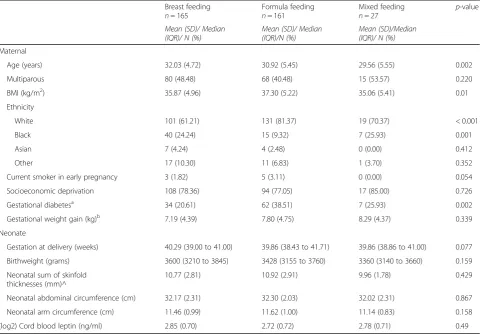Mode of infant feeding, eating behaviour and anthropometry in infants at 6 months of age born to obese women – a secondary analysis of the UPBEAT trial
Full text
Figure




Related documents
The loads from the event simulations are on average lower for all considered load components, with one exception: ramp-like events at wind speeds between 8 and 16 m s − 1 , at which
and be reduce the number of cesarean delivery. Due to the high cesarean rate in our country, dedicated care of midwives and the positive impact it will have on birth outcomes.
In the first stage, 361 EAs (urban, 134; rural, 227) were selected with probability proportional to the EA size, and with independent selection in each sampling stratum with
The results show that in the influence of the magnetic field, the increase in the electrolyte temperature strongly affects the microstructure of the Cu/Ni layer.. Temperature of 60
Velmans offers three general reasons to motivate his position: the physical world is ‘causally closed’ to the influence of consciousness; consciousness does not contain the
Thus, in April 1969, the Committee on Youth of New York, Chap- ter 2, District II of the American Academy of Pediatrics, circulated to its 1,253 pediatricians of District II
The prematurely born infant almost in variably develops iron deficiency anemia unless supplemental iron is given. The ade quacy of iron nutrition of the mother,15 perinata!
cfDNA: Cell-free DNA; CMA: Chromosomal microarray analysis; CNV: Copy number variation; CPM: Confined placental mosaicism; CVS: Chorionic villi sampling; NGS: